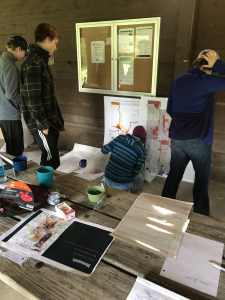Lesson Overview (II)
Lesson Snapshot:
Grade Levels: 9 – Undergraduate
Suggested Time: 2-3 class periods
One to two class periods for Activities. One period for discussion, debrief and follow-up.
Learning Objectives
This lesson asks students to take their understanding of covenants and expand their understanding of how racial discrimination in housing shaped the configuration of space to this day. Students will learn the spatial relationship between racially restrictive covenants and measures of inequality today. Students gain fluency with maps and spatial data through interrogating relevant topics.
Core Themes
-
- An examination of the contemporary consequences of racially restrictive covenants.
- The fundamentally spatial nature of inequality.
- Develop the ability to ask spatial research questions
- Know what parts of Minneapolis are experiencing inequality today, and the factors that contributed to that distribution.
- Consider how correlative connections between contemporary disparities and historical policies can be fortified through research.
- Discuss approaches to reparations for historical practices and structural racism.
- Be able to read and interpret a choropleth map.
Critical Questions
-
- How have racial covenants influenced where people live?
- How are racial covenants relevant today?
- How can asking spatial and historical research questions change our understanding of inequality?
- How do we understand the spatial distribution of inequality without ascribing value to particular areas? How do we challenge the discursively constructed perceptions of value that have come to define the spaces we live?

“I understood the material in a new way when I put it on the map” -Student
Reading primary sources opens a window into the past for students. Mapping sources transform that window into a new perspective on the present. Space is the dimension we share with the past. By bringing the insights of the past into space, we open up new possibilities to apply historical context to contemporary inequality.
We developed this lesson to expose students to the possibilities of spatial thinking and spatial analysis. What happens when we think about problems spatially? What novel connections can we make when locating events, people, and phenomena in geography? We want students to begin to understand the power of spatial thinking, and even further, how spatial thinking and historical context combine. This combination of past and present in place, engages students in new ways because of its transformative potential.
This lesson asks students to take their understanding of covenants and expand their understanding of how racial discrimination in housing shaped the configuration of space to this day.
(it is recommended that students complete the previous lesson on racial covenants or see the next section of this lesson for other resources to prime students on the concepts).
Continue to Lesson Outline
During the twentieth century, racially-restrictive deeds were a ubiquitous part of real estate transactions. Covenants were embedded in property deeds all over the country to keep people who were not white from buying or even occupying land; their popularity has been well documented in St. Louis; Seattle; Chicago; Hartford, Connecticut; Kansas City and Washington D.C.
Though covenants were everywhere, they did mutate over space and time. Those authored in the first years of the twentieth century have a different flavor than those recorded after World War II. The racial preoccupations of developers in Washington state were different from those of North Carolina. But all of these documents were blunt. For example, one common Minneapolis covenant reads: "the said premises shall not at any time be sold, conveyed, leased, or sublet, or occupied by any person or persons who are not full bloods of the so-called Caucasian or White race."
In Minneapolis, the first racially-restrictive deed appeared in 1910, when Henry and Leonora Scott sold a property on 35th Avenue South to Nels Anderson. The deed conveyed in that transaction contained what would become a common restriction, stipulating that the "premises shall not at any time be conveyed, mortgaged or leased to any person or persons of Chinese, Japanese, Moorish, Turkish, Negro, Mongolian or African blood or descent."
